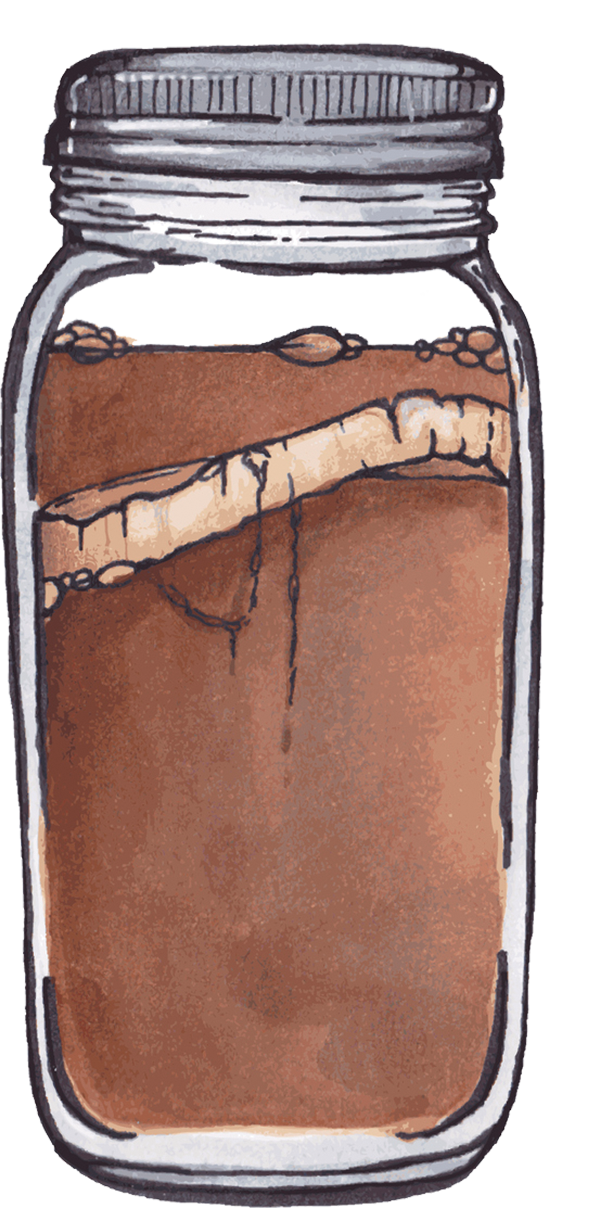
In the United States, approximately 81 million people are affected by seasonal allergies, also known as hay fever.1,2 Many individuals with asthma also experience seasonal allergies, as allergens such as pollen are common triggers for asthma attacks.3,4 This article will explore the health impacts of seasonal allergies and asthma, as well as the various environmental factors contributing to these allergic diseases.
Seasonal Allergies
Health impacts. The degree to which pollen affects humans is known as pollen allergenicity—increased pollen counts result in more severe symptoms for allergy sufferers.5–10 Allergies represent a significant public health concern, with symptoms such as sinus congestion, runny nose, and itchy eyes accounting for more than 13 million visits to doctors’ offices annually.11–13
Environment. In certain cities, climate change can lead to extreme weather events—such as heavy rainfall and heat—which in turn can significantly affect pollen levels and prolong the allergic season.14 The literature indicates that climate change has several impacts on seasonal allergies. Warmer spring temperatures prompt some plants to begin producing pollen earlier, while warmer fall temperatures may extend the growing season for plants like ragweed. Overall, rising temperatures and elevated atmospheric carbon dioxide (CO2) levels make the excess pollen even more allergenic.15,12,3,16
Other factors, such as increased greenhouse gas levels and warmer temperatures, also impact pollen production, including the quantity and the duration of the season.5,6,17–20 Researchers predict that pollen levels will keep rising as temperatures and greenhouse gas concentrations increase.5,7,21
Asthma
Health impacts. Symptoms of allergic asthma include shortness of breath, chest tightness, wheezing, and coughing.22 The literature suggests that the early onset of spring and associated pollen releases are linked to a higher risk of asthma-related hospitalizations.5–9 When pollen travels through the air and breaks down, particularly through high-humidity zones, it can easily enter the lower respiratory tract, triggering an asthma attack.3,23 Researchers found that each 10-grain increase in grass pollen per cubic meter was associated with a significant rise in the average number of emergency department visits in the United States, Canada, Australia, and Spain.5,14
While the link between seasonal allergies and pollen is well established,3,24,25 some of the literature reports that the role of pollen in seasonal allergic asthma is not fully understood yet. However, some studies have reported that seasonal allergies likely elevate the risk of developing asthma.3,26,27,24
Environment. Climate change, increased urbanization, and decreased biodiversity has played a part in allergic asthma,3,28 in addition to airborne allergens and air pollutants which can increase the concentration of the various allergens, leading to more severe asthma allergic reactions.3,29,30
The literature indicates that thunderstorms can increase the risk ratio of asthma attacks by 1.24.5,31 Thunderstorms can trigger severe allergic pollen reactions as the heavy amounts of rain and moisture rupture the pollen grains, intensifying their allergenicity.5,32,3,33
Bottom Line
Seasonal allergies and asthma, both of which are linked to environmental factors such as climate change, pose a growing public health challenge. As pollen levels rise due to warmer temperatures and increased atmospheric CO2, allergy sufferers continue to face more frequent and severe symptoms. The increasing prevalence of allergic asthma underscores the need for comprehensive strategies to manage these conditions.
As researchers continue to uncover the complex consequences of climate change, environmental health, and allergic diseases, it is crucial to implement strategies to mitigate climate change, improve urban planning, and enhance public awareness. Overall, addressing the environmental impact of allergic diseases is not only essential for managing individual health and wellness but also for safeguarding public health for future generations.
Sources
- Ng AE, Boersma P. Diagnosed allergic conditions in adults: United States, 2021. NCHS Data Brief. 2023;(460):1–8.
- Zablotsky B, Black LI, Akinbami LJ. Diagnosed allergic conditions in children aged 0-17 years: United States, 2021. NCHS Data Brief. 2023;(459):1–8.
- Xie ZJ, Guan K, Yin J. Advances in the clinical and mechanism research of pollen induced seasonal allergic asthma. Am J Clin Exp Immunol. 2019;8(1):1–8.
- D’Amato G, Cecchi L, Bonini S, et al. Allergenic pollen and pollen allergy in Europe. Allergy. 2007;62(9):976–990.
- Agache I, Akdis C, Akdis M, et al. Climate change and allergic diseases: a scoping review. J Clim Chang Health. 2024;20:100350.
- Paudel B, Chu T, Chen M, et al. Increased duration of pollen and mold exposure are linked to climate change. Sci Rep. 2021;11(1):12816.
- Zhang Y, Steiner AL. Projected climate-driven changes in pollen emission season length and magnitude over the continental United States. Nat Commun. 2022;13(1):1234.
- Sapkota A, Dong Y, Li L, et al. Association between changes in timing of spring onset and asthma hospitalization in Maryland. JAMA Netw Open. 2020;3(7):e207551.
- Rauer D, Gilles S, Wimmer M, et al. Ragweed plants grown under elevated CO2 levels produce pollen which elicit stronger allergic lung inflammation. Allergy. 2021;76(6):1718–1730.
- U.S. Centers for Disease Control and Prevention. Allergens and pollen. 2 Mar 2024. Accessed 6 May 2025. https://www.cdc.gov/climate-health/php/effects/allergens-and-pollen.html
- U.S. Centers for Disease Control and Prevention. Pollen and your health. 2 Mar 2024. Accessed 6 May 2025. https://www.cdc.gov/climate-health/php/effects/pollen-health.html
- United States Environmental Protection Agency. Climate change indicators: ragweed pollen season. Updated 15 Jan 2025. Accessed 6 May 2025. https://www.epa.gov/climate-indicators/climate-change-indicators-ragweed-pollen-season
- Schappert SM, Rechtsteiner EA. Ambulatory medical care utilization estimates for 2007. Vital Health Statistics Series 13, Number 169. National Center for Health Statistics. 2011. Accessed 6 May 2025. www.cdc.gov/nchs/data/series/sr_13/sr13_169.pdf
- Erbas B, Jazayeri M, Lambert KA, et al. Outdoor pollen is a trigger of child and adolescent asthma emergency department presentations: a systematic review and meta-analysis. Allergy. 2018;73(8):1632–1641.
- Crimmins AJ, Balbus JL, Gamble CB, et al. Air quality impacts. In: Crimmins AJ, Balbus JL, Gamble CB, et al., eds. The impacts of climate change on human health in the United States: a scientific assessment. U.S. Global Change Research Program; 2016;69–98.
- Smith M, Cecchi L, Skjøth CA, et al. Common ragweed: a threat to environmental health in Europe. Environ Int. 2013;61:115–126.
- Anderegg WRL, Abatzoglou JT, Anderegg LDL, et al. Anthropogenic climate change is worsening North American pollen seasons. Proc Natl Acad Sci U S A. 2021;118(7):e2013284118.
- Pecl GT, Araújo MB, Bell JD, et al. Biodiversity redistribution under climate change: impacts on ecosystems and human well-being. Science. 2017;355(6332):eaai9214.
- Picornell A, Buters J, Rojo J, et al. Predicting the start, peak and end of the Betula pollen season in Bavaria, Germany. Sci Total Environ. 2019;690:1299–1309.
- Rojo J, Oteros J, Picornell A, et al. Effects of future climate change on birch abundance and their pollen load. Glob Chang Biol. 2021;27(22):5934–5949.
- Ranpal S, von Bargen S, Gilles S, et al. Pollen production of downy birch (Betula pubescens Ehrh.) along an altitudinal gradient in the European Alps. Int J Biometeorol. 2023;67(6):1125–1139.
- Asthma and Allergy Foundation of America. Allergens and allergic asthma. Reviewed Jul 2024. Accessed 7 May 2025. https://aafa.org/asthma/asthma-triggers-causes/allergic-asthma/
- D’Amato G, Annesi Maesano I, Molino A, et al. Thunderstorm-related asthma attacks. J Allergy Clin Immunol. 2017;139(6):1786–1787.
- Panzner P, Malkusová I, Vachová M, et al. Bronchial inflammation in seasonal allergic rhinitis with or without asthma in relation to natural exposure to pollen allergens. Allergol Immunopathol (Madr). 2015;43(1):3–9.
- Meltzer EO, Farrar JR, Sennett C. Findings from an online survey assessing the burden and management of seasonal allergic rhinoconjunctivitis in US patients. J Allergy Clin Immunol Pract. 2017;5(3):779–789.e6.
- Eriksson J, Bjerg A, Lötvall J, et al. Rhinitis phenotypes correlate with different symptom presentation and risk factor patterns of asthma. Respir Med. 2011;105(11):1611–1621.
- Guerra S, Sherrill DL, Martinez FD, et al. Rhinitis as an independent risk factor for adult-onset asthma. J Allergy Clin Immunol. 2002;109(3):419–425.
- D’Amato G, Vitale C, Lanza M, et al. Climate change, air pollution, and allergic respiratory diseases: an update. Curr Opin Allergy Clin Immunol. 2016;16(5):434–440.
- Cecchi L, D’Amato G, Annesi-Maesano I. External exposome and allergic respiratory and skin diseases. J Allergy Clin Immunol. 2018;141(3):846–857.
- Brandt EB, Myers JM, Ryan PH, et al. Air pollution and allergic diseases. Curr Opin Pediatr. 2015;27(6):724–735.
- Makrufardi F, Manullang A, Rusmawatiningtyas D, et al. Extreme weather and asthma: a systematic review and meta-analysis. Eur Respir Rev. 2023;32(168):230019.
- D’Amato G, Annesi-Maesano I, Urrutia-Pereira M, et al. Thunderstorm allergy and asthma: state of the art. Multidiscip Respir Med. 2021;16(1):806.
- D’Amato G, Annesi-Maesano I, Vaghi A, et al. How do storms affect asthma? Curr Allergy Asthma Rep. 2018;18(4):24.




